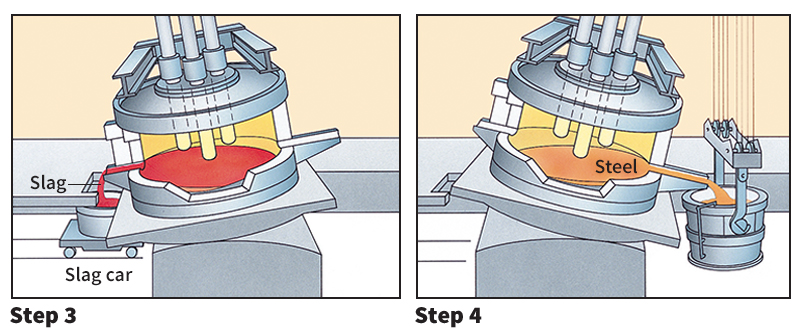Slag is a solid material produced when iron, copper, lead, or other metals are smelted from ores. Ironmakers separate metallic iron from iron ore by heating the ore inside a high-temperature furnace. The iron melts and sinks to the bottom of the container. Silicon, aluminum, and other impurities float to the top, forming a liquid that is poured off. This liquid cools and hardens to form slag. Iron-ore slags contain large amounts of silicates (minerals composed of silicon, oxygen, and one or more metallic elements). Sulfur-rich ores of copper, lead, and other metals melt at lower temperatures than iron ore does. Slags from copper ores contain much iron.

Metal workers once considered slag a waste product. Today, iron-ore slag serves as a filler in cement, a skid-reducing particle in asphalt roadways, and an ingredient in high-strength concrete. Slag is used in the beds of railroad tracks. Manufacturers use slag to make glass fibers for insulation. Slag from copper smelting serves as an abrasive in a cleaning process called sandblasting.
Piles of slag are all that remains at the locations of many ancient smelting works. Slag piles can resemble meteorites or pools of solidified lava and are sometimes mistaken for them.
See also Copper ; Iron and steel ; Smelting .
